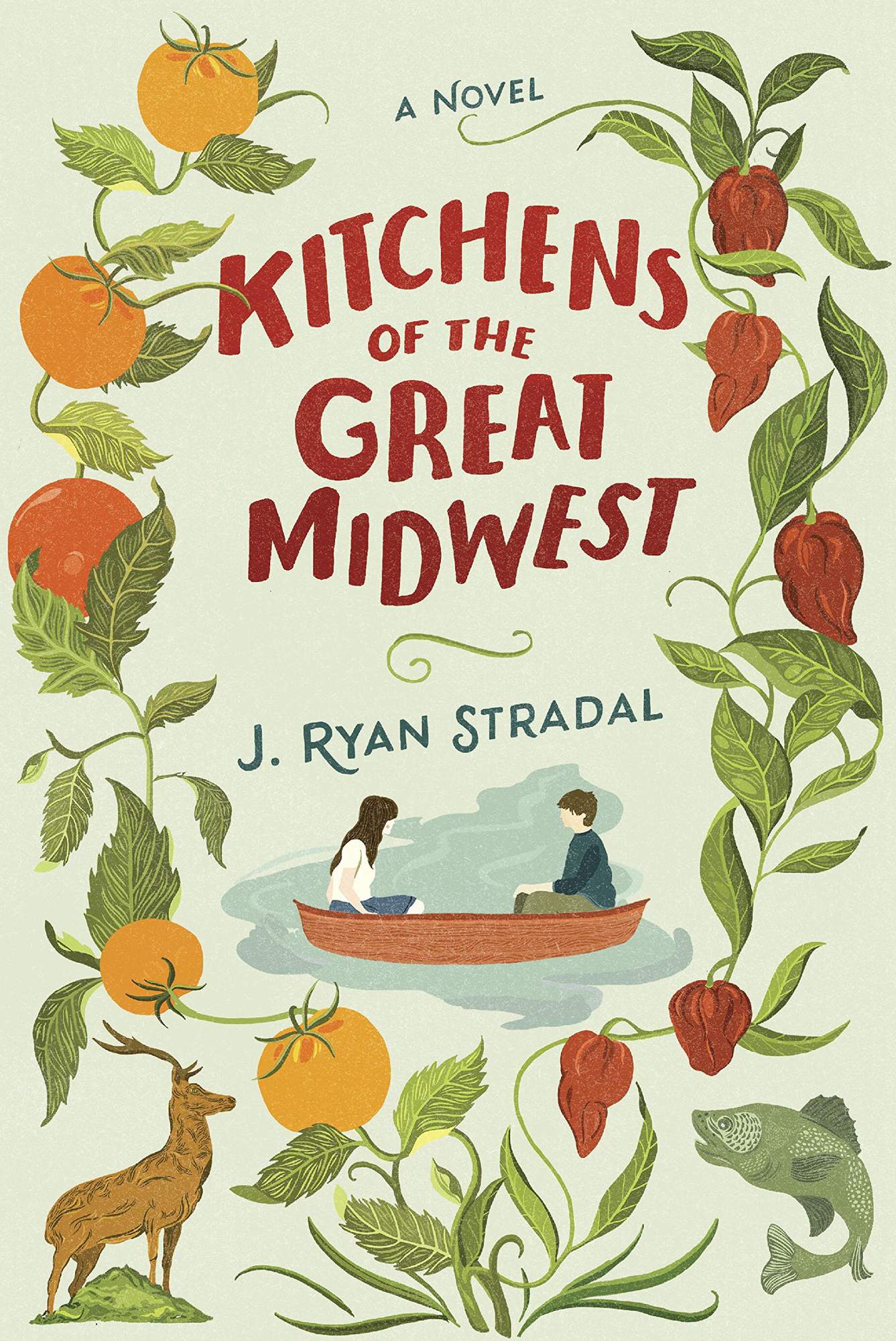Kitchens of the Great Midwest, by J. Ryan Stradal
Kitchens of the Great Midwest is the story of Eva Thorvald. It starts with her father, Lars, a stoically enthusiastic yet unheralded chef, but baby Eva quickly becomes the center of the story. Eva was born with an extremely acute palate, and it is her culinary development that is the central theme of the book, even though she only narrates one section of this multi-faceted novel.
Instead, Kitchens of the Great Midwest unfolds like a multi-course meal, with Eva as the unifying ingredient. In some sections, she shines. In others, her influence is more subtle, more nuanced. In a few, she is merely a fleeting hint. But she is always present, and binds all the sections together.
For instance, from Eva’s defining early section we move on to her older cousin, to whom a rebellious teenaged Eva flees after a totally expected parental confrontation. Then on to one of her first boyfriends, followed by a pretentious young woman, confident in her social upper mobility, who belongs to a group of foodie friends that meets regularly over dinner into which Eva’s introduction causes both delight and crisis. And so on. In each section, we learn about Eva, but it really is the narrator – the cousin, the boyfriend, the foodie acquaintance – who is the compelling star of the show.
This allows author J. Ryan Stradal to whip up an amazingly diverse and yet congruent story. Each character is vibrant and full in their own unique way; each speaks with their own style of voice and experience. Even the secondary characters are compelling. Gourmet chefs, sommelier wannabes, condescending market vendors, the potluck ladies of a small town Lutheran church (and their arch rivals from the Methodist church), even the likes of a young hospice nurse and a lonely trophy wife – each populate the story with a whiff of authenticity, key ingredients that do not overpower but nevertheless give the central tale a richness that otherwise may fall blandly flat.
However, if Eva were the only unifying motif in Kitchens of the Great Midwest, the story might still have a lack of integrated cohesion – more a set of short stories rather than a fully realized novel. Luckily, there are also the food experiences.
Each section has a food experience on which the action at least anecdotally pivots: a hot wings eating contest, a fishing trip to procure the freshest of walleye, a state fair dessert bars competition, an exclusive fine dining experience that has a waiting list that stretches over a decade. The narrator still take center stage, but the experience of food, especially the particulars involved in its preparation, are the consistent table setting. Sometimes, honest to goodness recipes are scattered throughout the narrative, as well.
It’s a delightful way to present a story. There is a Midwestern flair to the food and the characters, but also an arching elevation of the food and its ingredients that will delight and entertain foodie and fast food scarfer alike. Not everyone may be able to appreciate the visceral procurement of venison, and not everyone may understand the particularities of “Grilled Venison served with Grilled Moskvich Tomatoes, Wilted Kale with Sweet Pepper Jelly Vinaigrette”, but everyone will be able to enjoy the folding of opposite-end-of-the-spectrum culinary experiences into an eclectic but accessible story.
So pony up to the table and tuck into the literary feast that is Kitchens of the Great Midwest. Even if you know a lot more about the proper preparation of tater tot hotdish than the heirloom legitimacy of Moskvich tomatoes (or even if your skill set is based on a well timed microwave), you’ll come away from the experience thinking, “well dang, that was a mighty fine feast, indeed.
~ Sharon Browning

